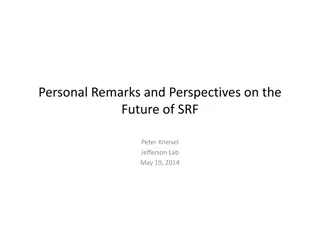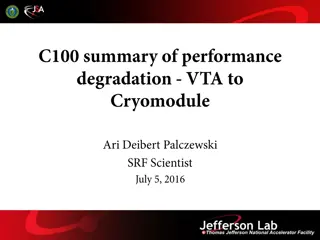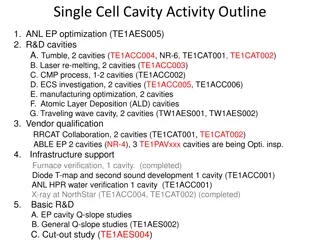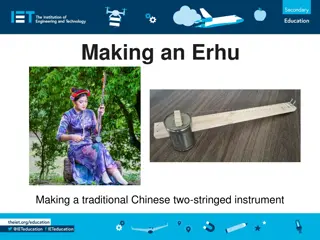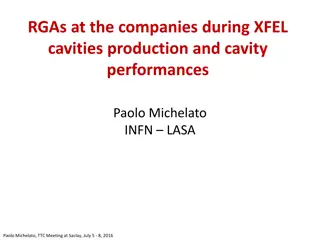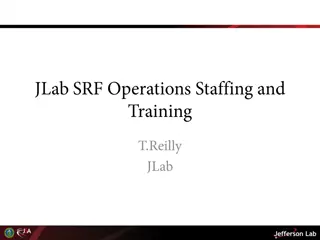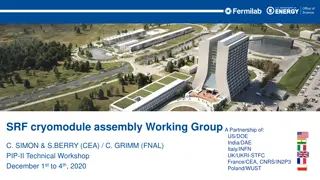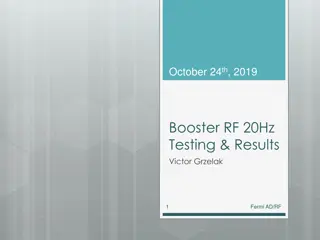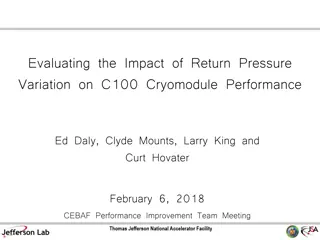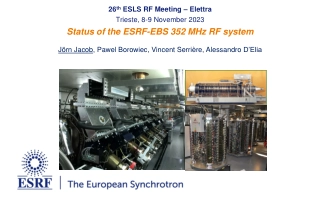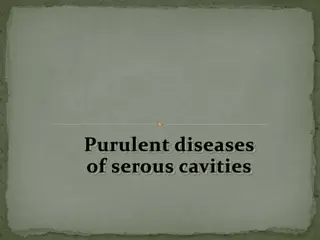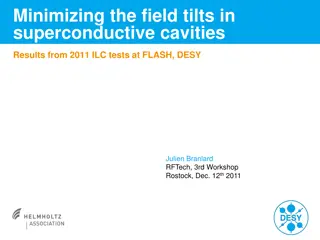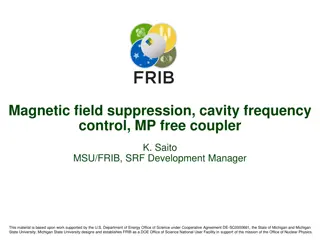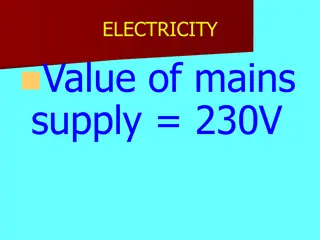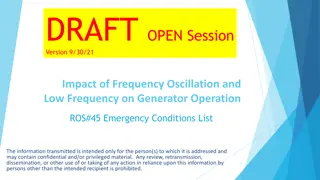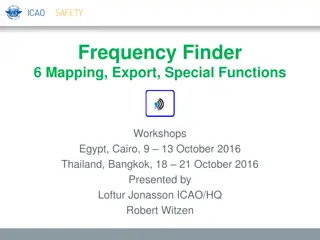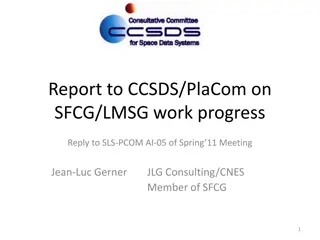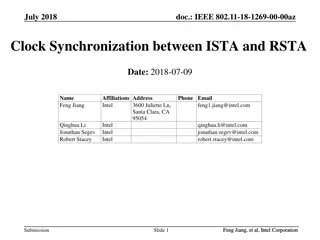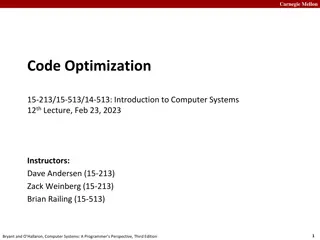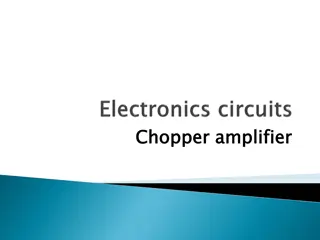Development of Frequency Tuners Optimization for SRF Cavities
Frequency tuners are crucial for adjusting the fundamental frequency of superconducting RF cavities to counteract detuning effects. The proposal discusses the importance of tuners, their operational mechanisms, and the challenges in achieving high reliability for efficient cavity operation. Various tuner versions, like the Saclay/DESY tuner, are evaluated for different projects such as the European XFEL and the International Linear Collider. Issues like inter-cavity spacing are addressed to optimize performance.
Download Presentation

Please find below an Image/Link to download the presentation.
The content on the website is provided AS IS for your information and personal use only. It may not be sold, licensed, or shared on other websites without obtaining consent from the author. Download presentation by click this link. If you encounter any issues during the download, it is possible that the publisher has removed the file from their server.
E N D
Presentation Transcript
A Proposal for FJPPL (TYL) Development of Frequency Tuners Optimization and Cryomodule Integration for 1.3 GHz SRF Cavities G. Devanz, F. Nunio, O. Napoly (CEA/Irfu) K. Artoos (CERN) A. Yamamoto, H. Hayano, and M. Yamanaka (KEK) to be presented at FJPPL meeting, Bordeaux, 26-27 May, 2014
Outline Introduction Proposal Future Scope Summary
Introduction The frequency tuners play an important role in the efficient operation of a superconducting RF cavity : the fundamental frequency of the cavity can be adjusted, and the detuning of the cavity under the Lorentz force (LFD) in a long RF pulse can be counteracted. The tuners apply a longitudinal force to change the length of the cavity. Typically a motor-driven adjustment applies the force to adjust the length of the cavity to the fundamental mode, in order to mainly compensate the thermal contraction effect. A piezo-driven fine-adjustment applies a force to counteract the effect of the Lorentz force during the RF pulse. Sophisticated feed-forward (feedback) systems are required to control the action of the tuners during pulsed (CW) operation. Achieving high reliability of the tuners (both mechanical and piezo) is a key requirement, and careful design of the stepper-motor drivers and associated gearing box is crucial in this respect.
E-XFEL Cavity, Tuner and He Tank 13/06/10 KEK-LC-Meeting 4
E-XFEL Tuner drawing courtesy: Lars Hagge and Lutz Lilje, 2013-11-1
Introduction (2) The so-called Saclay/DESY tuner is the version of the tuner in operation at the TTF/FLASH facility, where more than 50 such tuners are routinely operated in the 7 installed cryomodules. The same tuner will be used for the 800 cavities in the European XFEL. However, the Saclay/DESY tuner could not be considered as a baseline tuner in the Technical Design Report, published in 2013, for the International Linear Collider (ILC), because of the longitudinal envelope at the end of the cavity exceeding the beam pipe length limit on that end by 35 mm more than that required to increase a filling factor of active gradient components.
Inter-Cavity Spacing Issue ILC Type-IV XFEL 108 140 105 82 105 105 353 292 Reduction in inter-cavity spacing Bellows: Long cavity end = 61 mm = 26 mm = 35 mm = 108 82 = 140 105 A. Yamamoto, 2014/05/12 7
E-XFEL vs ILC Cryomodule 13/06/10 KEK-LC-Meeting 8
Demonstration and Evaluation of Various Couplers and Tuners in S1-Global (KEK) Every coupler and tuner demonstrated, as expected, and be applicable for ILC cavities Various subjects to be further investigated and settled: cost and reliability 13/06/10 KEK-LC-Meeting 9
Proposal An important objective of this proposal is to seek for a novel design to accommodate the frequency tuner within the ILC constraint of reducing the physical length of the beam pipe of 35 mm (see Fig. 1 for the space constraint). We may find two possibilities as follows: to seek for a shorter mechanical design with the same Saclay/DESY tuner being applied for the FLASH and E-XFEL tuners (see Fig. 2) , or to seek for a new design based on the tuner design for the CERN-SPL (Superconducting Proton Linac) cavity (Fig. 3). Both designs are originating from CEA/Saclay. There is an advantage with the CERN-SPL tuner : the motor location can be outside of vacuum vessel allowing for easier accessibility and maintainability. CERN SPL Cavity and Tuner European XFEL Tuner
He Tank Design Comparison E-XFEL/FLASH/TESLA LHe tank with Saclay/Desy tuner at the axial end ILC LHe tank design with Blade Tuner at the axial center Note: Re-visiting overall design of tuner and LHe tank may be required A. Yamamoto, 2012.12.13 ILC-PAC SCRF 11
A possible Extended Collaboration with LCLS-II Project and Fermilab LCLS-II Cavity: a Tuner Design Option to be investigated LCLS-II Tuner design covering the beam Pipe flanges, overcoming a constraint with a shorter beam pipe T. Peterson, C. Grimm, et al., Tesla type tuner assembly (photo at Fermilab) A. Yamamoto, 2014/05/12 AWLC14 12
A possible Extended Collaboration with LCLS-II Project and Fermilab R&D work to be shared by CEA, CERN, Fermilab, and KEK as follows: Engineering design: Evaluation of design Fabrication of a prototype: Evaluation of module integration by CEA Test and feedback: by Fermilab by CEA by Fermilab by CERN and KEK Activities A satellite workshop after LINAC 14 (CERN, Sept. 2014) The second workshop to be held in autumn, 2014 after a prototype work progressed at Fermilab
Summary A cooperative development work is proposed for a compact Frequency Tuner for various SRF elliptical cavity projects. CEA, KEK and CERN will cooperate with SLAC/Fermilab to develop a common and the best cost-effective tuner for future SRF accelerators. Two workshops are to be held based on the project proposed here.


